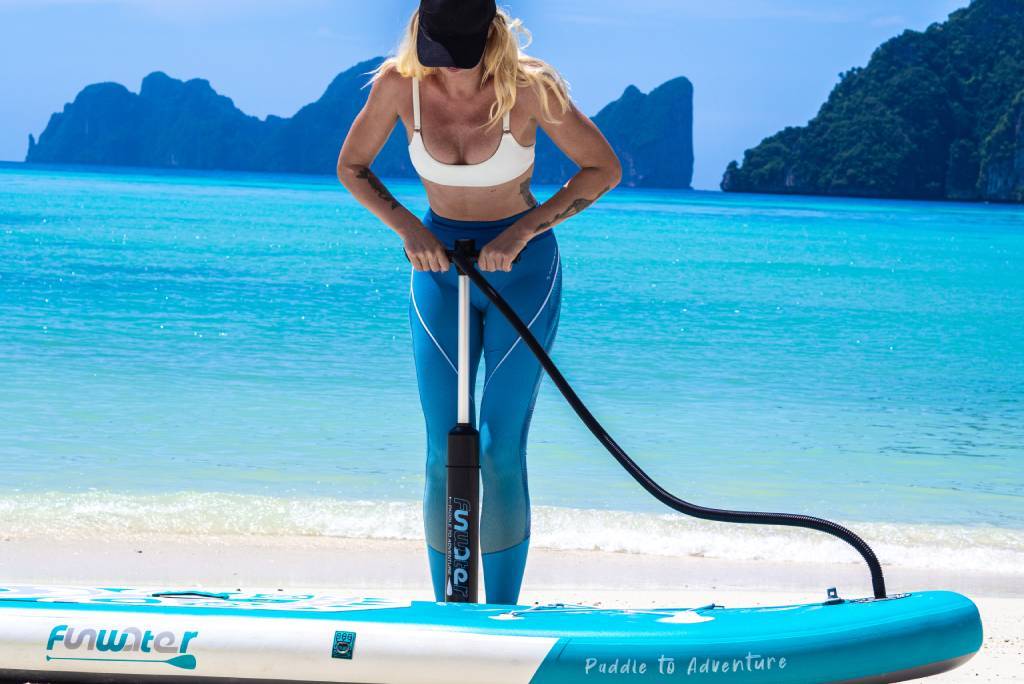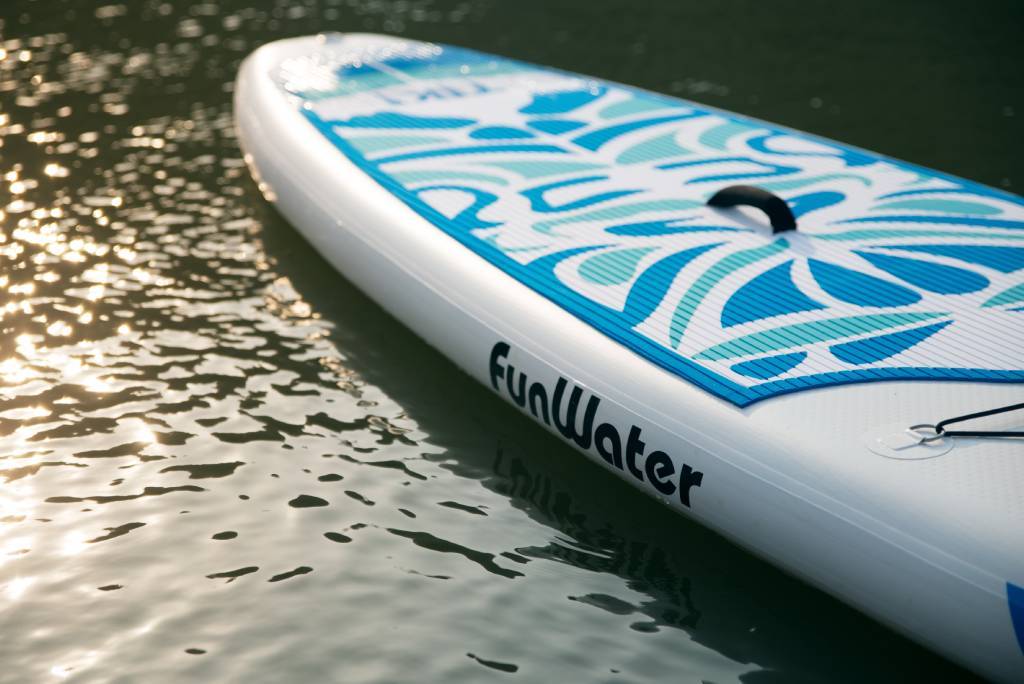If your inflatable stand up paddle board is losing air faster than usual, listen closely for a hissing sound near the seams, valve, or fin box. You can also use soapy water to spot leaks—bubbling indicates air escaping.


How to Check if Your Inflatable Paddle Board Is Leaking?
Stand up paddleboard season is here in Canada, and whether you’re paddleboarding on Okanagan Lake or cruising the Ottawa River, nothing can disappoint you more than a leak in your inflatable SUP board. Here’s a simple step-by-step guide to checking your inflatable paddleboard for leaks.
Before you do anything, make sure your SUP paddle board is fully inflated – most inflatable paddle boards require 12-15 PSI. Use a reliable pump with a pressure gauge, and inflate your stand up paddle board on a dry, clean surface.

Place your face close to the valve, seams, and fin box after inflation. Listen for a slight “hissing” sound – this is often the first sign of a leak.
Key Areas to Check: Around the inflation valve, seams and edges (especially if the board is folded tightly), center handle and D-ring attachment points, fins or fin box.

Mix warm water and dish soap until a fine foam forms. Apply the soapy water mixture to the inflation valve, seams, and around the fins and watch carefully—bubbles that grow and burst mean a leak.
Sometimes leaks can be so gradual that you need to leave your inflatable SUP board inflated for 1-2 days inside or in a garage. Use tape or a pen to mark the pressure on the SUP board when it was first inflated. After 1-2 days, recheck the pressure. If the pressure is significantly lower than normal (and the weather is stable), it's most likely a slow leak.

Leaks in inflatable paddle boards, while annoying, are rarely a dealbreaker. If you own a Funwater paddle board, they're made of durable materials—but any piece of gear needs to be cared for to last. A simple check can save you from a leak that ruins your paddling experience on the lake.
Subscribe
Sign up to our newsletter to receive news, reviews, discounts and deals...
Funwater Blogs
Frequently Asked Questions
How do I know if my inflatable stand up paddle board is leaking?
If your inflatable stand up paddle board is losing air faster than usual, listen closely for a hissing sound near the seams, valve, or fin box. You can also use soapy water to spot leaks—bubbling indicates air escaping.
What’s the best way to find slow leaks on a blow up paddle board?
For slow leaks, inflate your blow up paddle board to full pressure (usually 12–15 PSI), mark the gauge reading, and let it sit for 24–48 hours indoors. A significant drop in pressure may signal a slow leak, even without visible damage.
Can I still use my SUP paddle board if it has a small leak?
It’s not recommended. Even a small leak on a SUP paddle board can affect buoyancy and safety, especially in Canadian waters where conditions can change quickly. Always repair any leak before paddling again.
Where are the most common leak spots on a paddle board for beginners?
Common leak areas include the inflation valve, seams, fin box, and attachment points. Beginners using paddle boards in Canada’s lakes and rivers should inspect these areas regularly, especially if the board has been stored folded.
Are Funwater paddle boards prone to leaking in Canadian conditions?
Funwater paddle boards are made with durable, multi-layer PVC and are well-suited for Canadian climates. However, like any inflatable stand up paddle board, they should be checked regularly to ensure peak performance and safety.